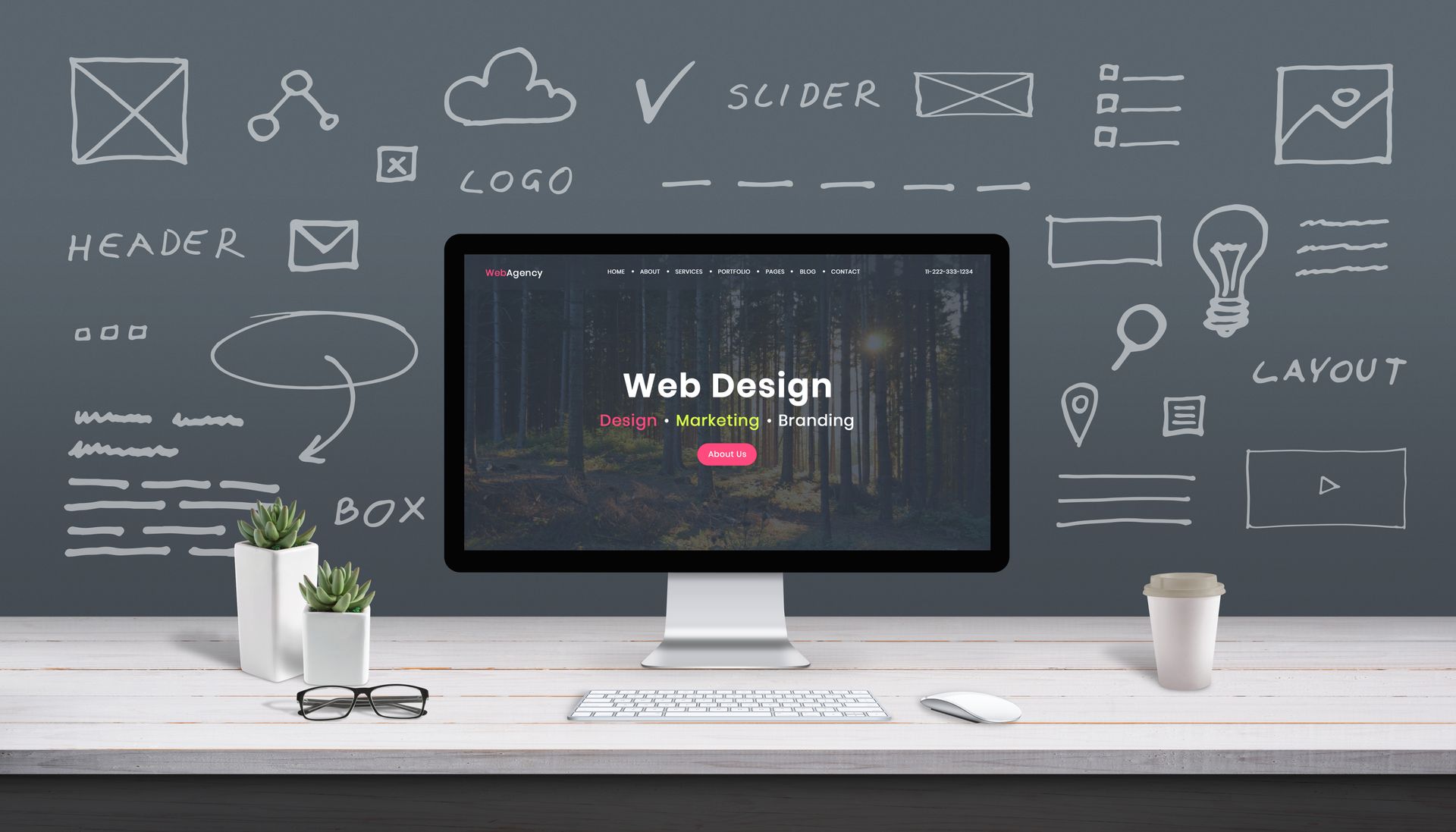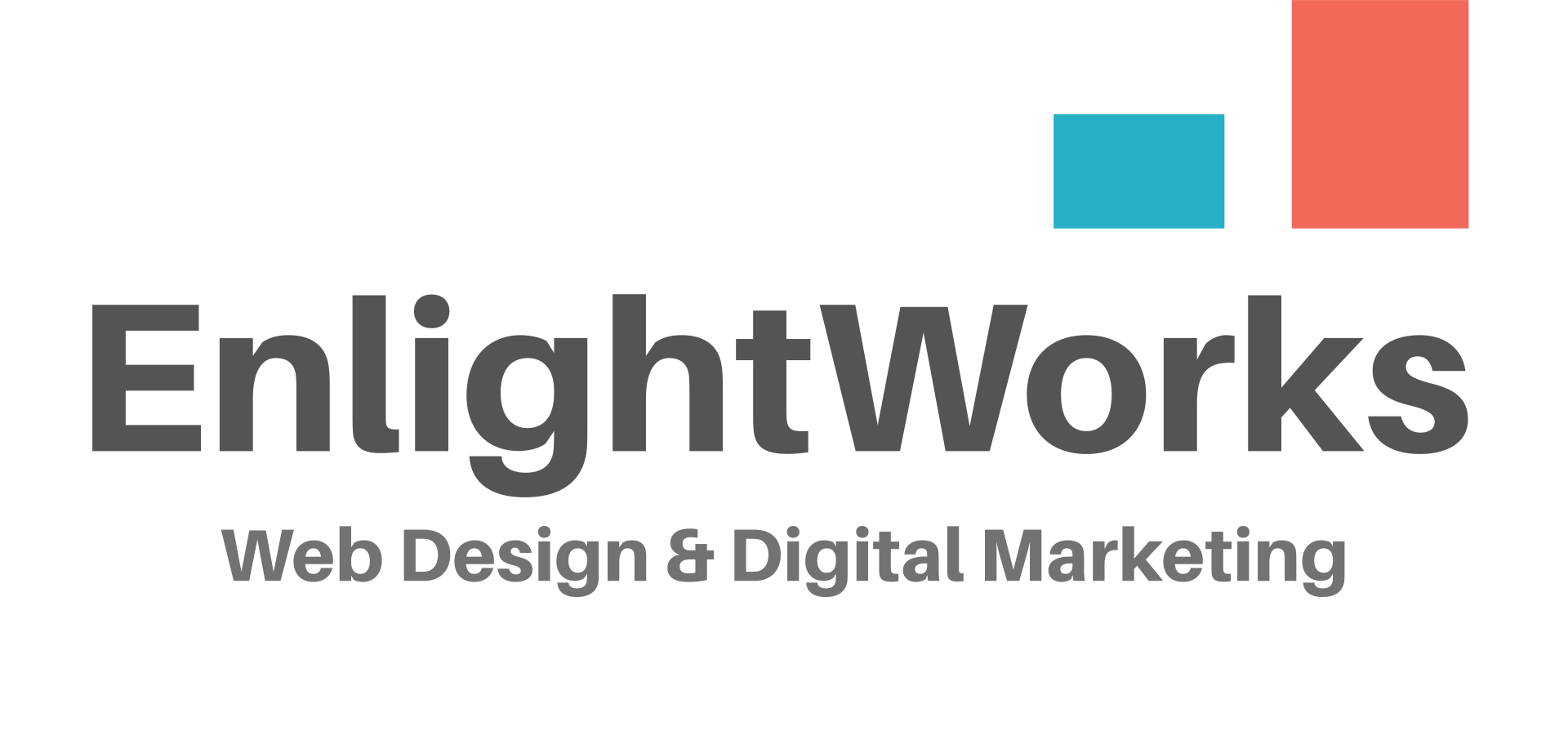The MSP Website Redesign Checklist

By now, in this digital age, you probably know that having a website is crucial—especially for managed service providers (MSPs). Competition is huge out there and you need to stay ahead of the game!
A good website does not only show who you are but it also showcases your offerings, attracts potential clients, and strengthens brand identity. It is, in essence, the digital storefront of your business.
Already have a website and want to make it better? You’ve come to the right place! Our team at Enlightworks has put together the ultimate website design checklist
to guide MSPs in creating, refining, or revamping their site to ensure it delivers maximum impact.
Get to cover every angle of website design - from setting clear objectives and measuring performance to optimizing for search engines and ensuring a seamless user experience. This checklist will walk you through essential steps like researching competitors, organizing your site's structure, choosing an appealing visual theme, crafting a content strategy, implementing the technical side, testing, launching, and making ongoing enhancements. Let’s start!
First Things First: Goal Setting For Your Website
Yes, even a website needs goals.
It’s so easy to get started with all the designing and laying everything out just because you think it looks great. But if you want to
create conversions with your website, you need to set goals.
This involves clearly defining your business objectives, getting to know your target audience, and thoroughly evaluating your current website (if one exists).
Step 1: Define Your Objectives
First, think carefully about what you want to achieve with your new or redesigned website. Do you want to generate more leads? Increase brand awareness? Facilitate ecommerce sales? Rr improve customer support? Outline the specific business objectives you want the website to fulfill. This will inform priorities in the design process.
Step 2: Understand Your Target Audience
Next, gather information about who you are creating this website for. Develop audience personas representing your ideal customers. Consider demographics like age, location, gender, income level, as well as psychographics around interests, values, and pain points. Understanding your audience's goals and challenges will allow you to craft tailored content and user experiences.
Step 3: Audit Your Current Website
If your business already has a website, thoroughly evaluate its current state across several dimensions:
- Performance: Assess site speed, mobile optimization, and other technical elements. Slow load times or a poor mobile experience should be addressed.
- Content: Review your content's relevance, accuracy, and ability to engage visitors. Outdated or thin content should be refreshed and expanded.
- SEO: Check keyword optimization and site search engine visibility. Gaps may need improved metadata, tags, links, and content.
- Design: Evaluate visual appeal, navigation, calls-to-action, and responsiveness. Usability problems reduce conversions.
An audit identifies improvement opportunities as you redesign for better results. Keep what's working well while addressing any discovered flaws.
Need Help? Contact Enlightworks For A Website Assesment!

The Planning Phase
- Establish a realistic timeline for each phase of the project, from initial planning to post-launch. Build in buffer time for unexpected delays.
- Create a budget that covers all costs like design, development, content creation, photography, project management fees, and ongoing hosting/maintenance. Get quotes from vendors.
- Define team member roles and responsibilities. Who will handle what tasks like writing, designing, developing, project management, testing, etc?
- Schedule regular check-ins and milestones to track progress. Plan to iterate based on feedback.
- Document the plan to align all stakeholders on scope, timeline, budget and expectations.
Competitive Analysis
- Research competitor websites within your industry niche. Analyze their designs, content, features and functionality.
- Make notes on effective strategies to emulate, along with pain points or flaws to avoid. Look for gaps or opportunities to differentiate.
- Note industry website design trends and best practices for visuals, layouts, calls to action, content types, etc.
- Gather metrics on competitors' traffic, conversions, page speed, mobile optimization and SEO success. Use tools like SimilarWeb, SEMrush or Ahrefs.
- Synthesize findings into key insights that should inform your website strategy and development. Identify your competitive advantages.

The Design and Development
Information Architecture and User Experience (UX)
The information architecture and user experience design are crucial to creating an intuitive, user-friendly website. This involves developing a site map to plan the structure and navigation, mapping out user journeys to understand key tasks and pain points, and optimizing the site for seamless user flows. Keeping the website organized with clear IA will enable visitors to easily find information and improve the overall UX.
Visual Design
Visual design brings a website to life and makes a strong first impression on visitors. Carefully craft the aesthetics to align with your brand style, including logo, color scheme, typography, and imagery. Icons and graphics should enhance the UX and create visual harmony across pages. A responsive design is essential for optimizing the site on all devices. Keep the interface consistent yet visually interesting.
Content Strategy
The content provides value for your audience and drives actions. Define the tone and messaging that aligns with your brand voice. Optimize content for SEO with relevant keywords and metadata. Place clear calls-to-action to facilitate conversions. Ensure all copy provides helpful information to users in a concise, readable style. Refresh content regularly to keep visitors engaged. Well-planned content strategy attracts and converts your ideal customers.
Technical Considerations
A website's technical foundation is crucial for providing a seamless user experience and ensuring long-term success. Two key technical considerations for MSPs are selecting the right platform and CMS, and implementing robust security measures.
Platform and CMS Selection
Choosing the right platform and content management system (CMS) lays the groundwork for an effective website. Some key factors to evaluate when selecting a platform and CMS include:
- Capabilities - The platform and CMS should have features to support your goals, like lead generation forms, SEO optimization, etc. Popular CMS choices like WordPress and Joomla have abundant capabilities through plugins.
- Customization - Look for platforms and CMSs that enable you to fully customize site design, layout, and functionality. WordPress is highly customizable, while custom-built platforms offer the most flexibility.
- Ease of use - The platform and CMS should be intuitive and easy for your team to use when updating content and managing the site. Open source CMSs like WordPress tend to be more user-friendly.
- Scalability - As your business grows, the platform and CMS should be able to scale with increased traffic and content. Cloud-based solutions tend to be more scalable.
- Cost - Factor in both upfront and ongoing costs. Open source CMSs like WordPress are typically most cost-effective.
Security Measures
Security is make-or-break for any website, so MSPs must take precautions like:
- Obtaining an SSL certificate to enable HTTPS and data encryption.
- Keeping software regularly updated to patch vulnerabilities.
- Performing frequent backups to enable recovery from any incidents.
- Crafting and implementing a privacy policy to comply with data protection regulations.
- Using threat monitoring and response tools to identify and address security threats proactively.
- Limiting access to sensitive systems and data to prevent unauthorized access.
- Using secure coding practices during development to minimize exploitable weaknesses.
With the right platform/CMS and security precautions, MSPs can build a technical website foundation that delivers great user experiences while keeping data safe.
SEO and Accessibility
A website's search engine optimization (SEO) and accessibility are crucial for reaching and engaging with your target audience.
On-Page SEO
- Use relevant keywords in page titles, meta descriptions, headers, image alt text, and content without over-optimizing.
- Create unique, high-quality content that answers search queries and provides value.
- Optimize page speed by minifying code, compressing images, and eliminating render-blocking resources.
- Implement proper heading structure, internal links, alt text for images, and metadata.
- Ensure a mobile-friendly responsive design and fast page load times.
- Regularly create new, useful content to give search engines fresh pages to index.
Accessibility Standards
- Add ARIA attributes to provide context for assistive technologies.
- Use proper semantic HTML elements like main, header, nav, etc.
- Provide text alternatives for non-text content like images.
- Allow users to zoom and scale page content without loss of functionality.
- Support keyboard navigation and screen reader accessibility.
- Design with appropriate color contrast ratios.
- Write clean, well-structured HTML code.
- Follow Web Content Accessibility Guidelines (WCAG) 2.1 standards.
By optimizing for both search engines and accessibility, you create a website that connects with more users and delivers a better experience. Conduct ongoing testing to identify any issues.
Testing and Launch
Thorough testing is crucial before launching a new or redesigned website. This helps ensure all elements are functioning properly and avoiding any major issues after going live.
Quality Assurance Testing
Conducting comprehensive QA testing should involve:
- Functionality testing - Verify all site features and forms are working correctly. Check navigation, interactions, integrations etc.
- Cross-browser testing - Ensure the site displays properly on all major browsers like Chrome, Firefox, Safari, Edge.
- Cross-device testing - Test on real devices like phones, tablets, laptops. Responsive design should adapt to different viewports.
- Load testing - Check page load times and optimize as needed. Test on slow connections to identify any bottlenecks.
- Accessibility testing - Validate compliance with accessibility standards for disabled users.
- Security testing - Perform scans to check for vulnerabilities like cross-site scripting, SQL injection etc.
- User acceptance testing - Have actual users test the site for any issues. Incorporate feedback into iterations.
Launch Preparation
To ensure a smooth launch, preparations should include:
- Final SEO checklist - Optimize page titles, meta descriptions, alt text, sitemaps.
- Analytics/monitoring setup - Install Google Analytics, heatmaps, user session recording.
- Launch promotion plan - Email campaigns, social media, PR outreach to drive traffic.
- Staff training - Ensure customer-facing teams are familiar with the new website.
- Rollback plan - Have a way to revert quickly if major bugs arise.
Following structured testing and launch plans helps avoid scrambling right before go-live. Investing in quality assurance leads to a successful release.
Continuous Improvement
A website is never truly "done" - it requires ongoing maintenance and iterative improvements to stay effective over time. Here are some key areas to focus on:
Iterative Design Updates
- Regularly review your website analytics to identify areas for improvement. Pay attention to bounce rates, time on page, and exit pages.
- Look for opportunities to refine and optimize page layouts, navigation, calls-to-action, etc. based on how users interact with your site.
- Keep your website design current by periodically updating color schemes, fonts, imagery, etc. But avoid dramatic redesigns that might alienate existing users.
- Continuously fine-tune and expand your content to address evolving user interests and search trends.
- Consider seeking periodic feedback from users through surveys, interviews, or usability testing.
Ongoing SEO and Accessibility
- Monitor your keyword rankings and tweak SEO titles, meta descriptions, etc. to improve performance.
- Update internal links and site architecture to make key pages easier to find.
- Fix any new accessibility issues like broken ARIA attributes or insufficient color contrast.
- Check for SEO and accessibility errors using automated tools, and address any flagged issues.
- Stay up to date on Google's algorithm changes and best practices for on-page optimization.
- Make sure new content follows accessibility standards for images, videos, forms, etc.
By continually optimizing and enhancing your website through iterative improvements, you can provide an increasingly better experience for your users over time.
Post-Launch Activities
After launching your new or redesigned MSP website, it's crucial to collect user feedback and monitor performance to identify areas for improvement.
Feedback Collection and Analysis
Actively soliciting feedback from website visitors provides valuable insights into their experience. Consider implementing:
- Feedback forms or surveys - Place contact forms or embedded surveys to gather user input. Ask about navigation, content, visual design, and overall experience.
- User testing - Recruit representative users to complete common tasks on your site while observing their behavior. Identify pain points and areas of confusion.
- Social media monitoring - Track mentions of your business and website on social channels. Look for feedback, reviews, complaints, or suggestions.
- Web analytics - Review visitor demographics, traffic sources, landing/exit pages, and conversion metrics. Analyze user flows.
- Customer support logs - Identify FAQs and common website issues noted by customers contacting support channels.
Synthesize feedback to understand website strengths, weaknesses, and opportunities to better meet user needs. Share key findings with stakeholders.
Website Performance Monitoring
Ongoing monitoring provides visibility into how your website is performing post-launch. Track:
- Traffic volume and sources over time
- Bounce rates, time on site, and scroll depth
- SEO visibility through keyword rank tracking
- Form submission and conversion rates
- Site speed and web performance metrics
Compare metrics to your goals and industry benchmarks. Troubleshoot issues negatively impacting performance. Set up alerts for critical performance indicators.
Regularly evaluating user feedback and monitoring website analytics allows you to continuously enhance the digital experience. Keep iterating and optimizing based on actionable insights.
Looking For Specialized MSP Website Services? Choose Enlightworks!
Looking to give your MSP a digital edge but feeling overwhelmed by the details? Fear not! At Enlightworks, we've spent years perfecting the art of website creation just for MSPs like you. With years of experience under our belt, we’ve crafted digital experiences that set you apart from the crowd. Ready to make your MSP stand out online? Let's make it happen. See how we’ve helped different MSPs over the years below!
If you are looking for help with your website, contact us to schedule a meeting and receive a quote
EnlightWorks


